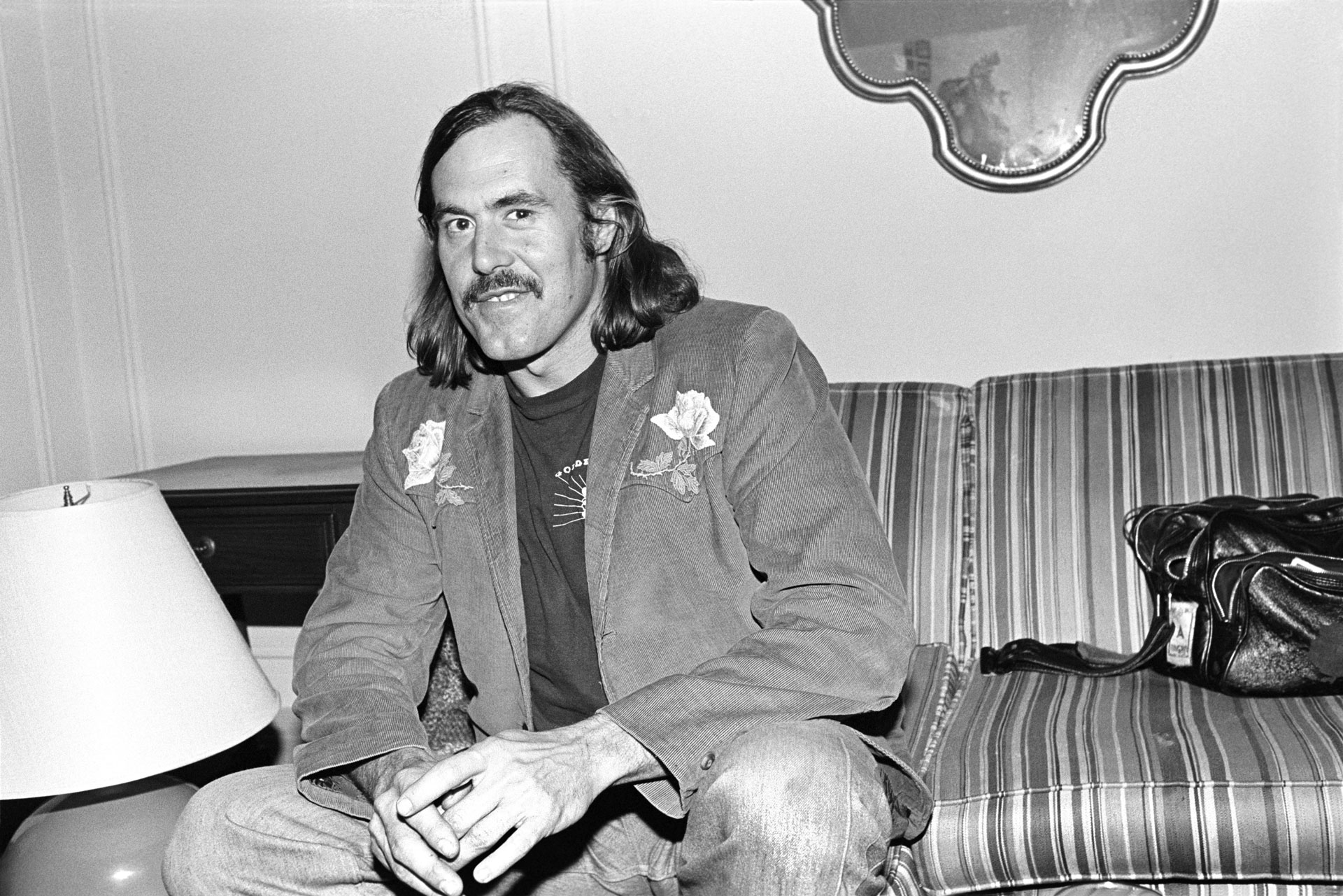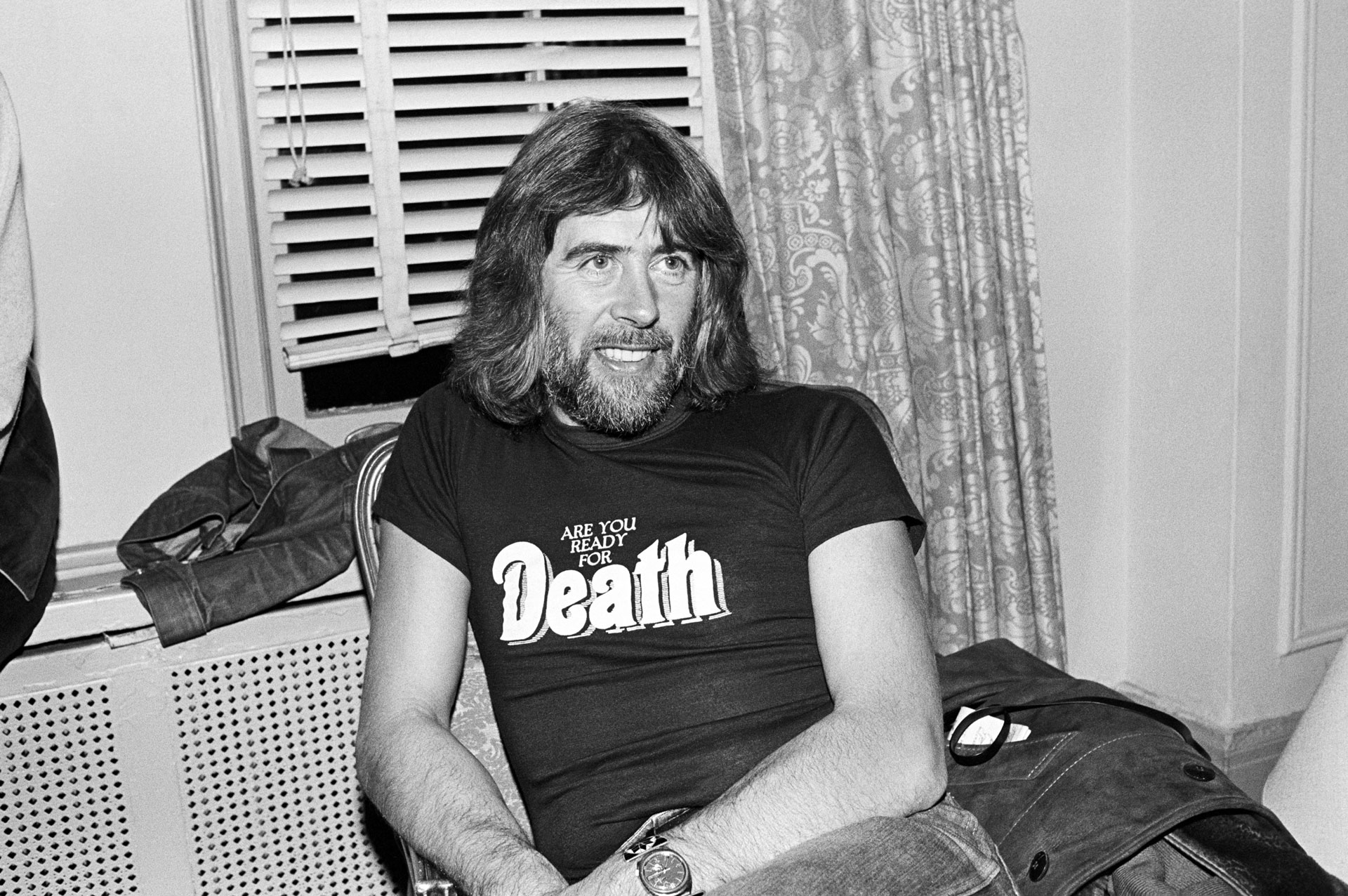Everything
![]()
NEW YORK CITY: Four prominent water marks lay stained into the long, leather-stitched tabletop in my hotel room: a spirit glass – probably a whiskey neat – another most definitely a late-night glass of syrah. There’s not a coaster in sight at the Gramercy Park Hotel, but that’s the point. The residue from evenings gone are encouraged to evoke “that lived-in feel”, I’m told. If you look closely at the tabletop though, there are faint markings of other glasses of liquor – dim nods to nights of debauchery or passion or both – and all adding to the storied history and authenticity of this once-musty, raucous and idiosyncratic bastion.
After a refurbishment in 2006 by lauded American painter and Oscar-nominated filmmaker Julian Schnabel, today the Gramercy is wildly rococo in style albeit still bohemian in spirit. The raspberry velvet curtains in the rooms are heavy, the walls are jade green, the upholstery is opulent and overstuffed, the cerulean throw is messily splayed on purpose across the enormous bed and the room’s carpet is a take on the custom Schnabel-designed Aubusson rug that consumes the hotel’s foyer. But beyond the velvet headboards and tasselled chairs – and the fact the Italian bedding is actually like sleeping inside a marshmallow – you just know these walls have seen some things (and heard some recaps over the excellent eggs the next morning).
To truly appreciate the lavish furnishings, however, is to understand the property’s rock’n’roll history. Nicknamed “The Glamercy” in the ’70s, the hotel was known as a top-tier party spot – a rockstar’s paradise if you will – given its permissive atmosphere. At the time, it became good business for the hotel owner, Herbert R. Weissberg, to turn a blind eye to the fact guests could order a cheeseburger, a guitar pick or cocaine via room service. The rooms were also reasonably priced for record labels who felt their talent were too high profile for the Chelsea on West 23rd, but not quite the sell-out concert that would warrant a stay at The Plaza uptown.
“We always stay in the same joint – the Gramercy Park Hotel,” The Clash lead singer Joe Strummer said pre-refurbishment. “Talk about faded grandeur. We stayed there in the heyday and I don’t think one fitting in the whole hotel has changed since ’78. I just love that. You would’ve thought some yuppie developer would’ve swept through and changed it. The fronts fall off the AC units and the plastic bits fall off the phone. I’m more at home in a situation like that.”
At the height of the hotel’s popularity, guests included everybody from Jerry Garcia, Bob Dylan, David Bowie and Blondie (the latter lived in the hotel for three years) to Aerosmith, Madonna and U2 (who were completely starstruck to see The Clash coming out of the elevator one day. “They were so cool, and we knew we weren’t,” recalled Bono some years later.) According to Herbert’s grandson, director and producer Max Weissberg, the rough-around-the-edges style of the Gramercy in the ’70s and ’80s was more a case of cheapness than design. “In the ’70s and ’80s, my grandfather [who owned the hotel for nearly 40 years] would buy his furniture from hotels that had decided to renovate and were discarding pieces,” recalls Weissberg. “In his early days, he would pour water on carpets to mimic stains before an auction, so he’d discourage other bidders. We often said he was so cheap he could squeeze a nickel into a dime.”
Here, Weissberg – who is working on a TV series about the Gramercy – generously recounts the incredible stories of musicians who stayed at the hotel during this golden era; the parties, the scandals and the things he experienced as a kid while living in the . establishment. From Bob Marley smoking pot in the hallways to Bob Dylan writing lyrics in his hotel room late at night after the breakdown of his marriage, according to Weissberg, the water marks on the leather tabletops are just the beginning.
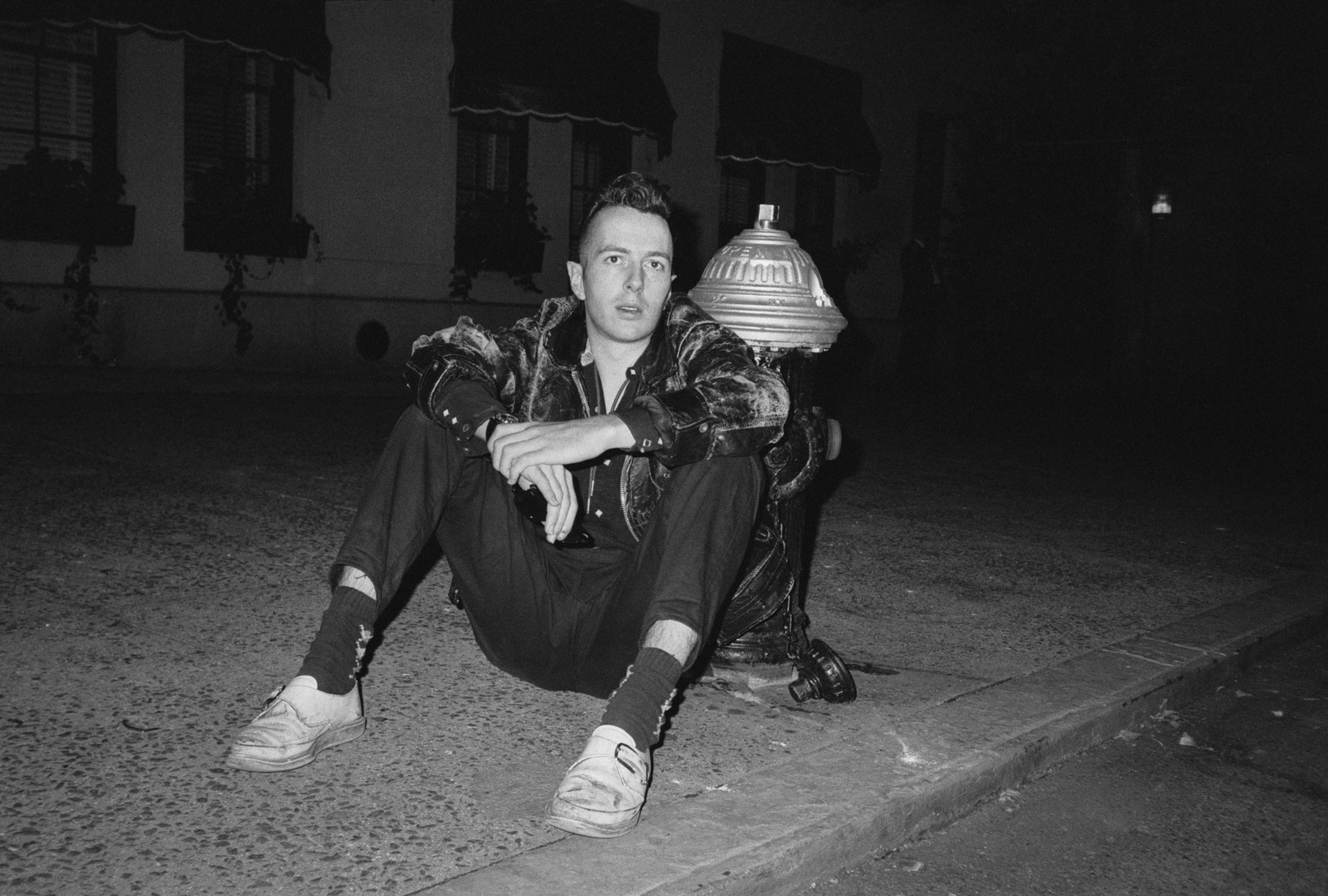
ICON: What was it about the Gramercy Park Hotel that had it pegged as the go-to for musicians in the ’70s and ’80s?
WEISSBERG: The Gramercy was cheap and had a great location near Tramps, Max’s Kansas City, SOB’s, Danceteria and some recording studios around the corner on 21st St. In the late 1950s, my grandfather made a ‘lounge’ by encasing the lobby with Venetian-blind walls. He then brought in a piano player and added free chicken wings and goldfish crackers. Later I read that many punk rockers in the East Village survived off this food because it was easy to steal. I guess it made a scene. David Bowie’s manager claimed that his stay made it the place everyone wanted to be. But The Byrds and Aerosmith stayed before him. I think it ended up being a place many different people ‘discovered’ and thought they created.
ICON: What are your most vivid childhood memories of the Gramercy? What was it like living there?
WEISSBERG: Once, when I was 10 years old, I dropped a glass bottle out the window that landed in the courtyard. My mother wanted to punish me by cleaning it up and she told my grandparents the story, humiliating me. I was shuffled through a bunch of employees, each repeating the story, until finally I was led by two maintenance guys through a window into the inner courtyard. Just as I was about to clean it up, the younger one – Hispanic, no more than 18 – cleaned it up for me. I think he was trying to curry favour and thought I’d inherit the top job one day. I remember a lot of great food, skinner rockers, and ass-kissing employees.
ICON: What was your grandfather like? Reading about him, he seemingly took great pride in his “kingdom”.
WEISSBERG: Herbert’s voice sounded like a crow and he was quite clever and always ready with a punchline. As a kid, I remember him pointing to his vodka and saying, “Want to try my water?” Like many businessmen, he smoked Cuban cigars and wore shirts with his initials embroidered on them. His favourite spot was the corner of the dining room, which is today the corner of the Rose Bar. He seemed to be naturally indifferent to his customers. When I asked about rock stars or Socialist leader Norman Thomas (one of his residents), he would say things like, “Good tenant, always paid the rent.” In
most cases, when guests trashed a room, he just sent the bill to the record company without any hard feelings.
ICON: As you got older, did Herbert ever talk about the things he turned a blind eye to?
WEISSBERG: I was repeatedly told by my relatives that Herbert let the employees steal a little because it was a tax-free way of paying them more. And Herbert never paid much. But clearly the thievery got out of hand and a lot of money was stolen over the years by many, many employees. One of his resident managers ran a prostitution ring out of the bar for years and stole more than USD $200K. In terms of the guests, High Times magazine held its founding party in 1974 in the hotel with a bunch of nitrous oxide tanks and continued to hold parties and do drug deals there. I sometimes hung out with the editors as a teenager in the 1990s. They eventually threw a big anniversary party around that time, but it got broken up over complaints. When the police arrived, the editors totally freaked out and flushed a ton of drugs down the toilet. But the police didn’t do anything except ask them to end the party.
ICON: Tell me about the hotel’s permissive atmosphere and the notion that you could get away with anything?
WEISSBERG: My uncle David lived in the hotel and was a heroin user. He also stored firearms in various places in the hotel to protect his ‘business’. So there was little the guests could do to top that. Herbert also gave money to the local police benefit fund so they’d go easy on the guests and not give tickets to the cars parked out the front. Bands that trashed the place were seldom banned. For example, during Aerosmith’s record negotiations with Columbia in the early 1970s, they took a bunch of speed and trashed the place. They eventually came back. Only two acts I know of were banned: Sid Vicious and The Black Keys. The former for throwing a TV out the window and obliterating his room. [His girlfriend] Nancy [Spungen] would also scream in the lobby and elevator. The Black Keys were tossed for throwing a ton of stuff out the window including beer cans and Gideon bibles. You have to draw the line somewhere. The Black Keys returned to perform in a Rose Bar session, however.
(Editor’s note: In October 1978, Spungen was found dead in the bathroom of the couple’s room at Hotel Chelsea, located down the road from the Gramercy Park Hotel in Manhattan. Sid Vicious was charged with her murder, accused of stabbing his girlfriend in the abdomen. He died of a heroin overdose while on bail in February 1979, before the trial could take place.)
ICON: What was one of the most notorious nights that was swept under the rug?
WEISSBERG: In the mid-1980s, Guns N’ Roses frontman Axl Rose and his songwriter, West Arkeen, got into a brawl with the front desk clerks over some mix-up with the news that his father had died of a heart attack. Twenty years later, Axl Rose returned to perform in a Rose Bar session and some guy tried to stab him. Trouble seems to follow him.
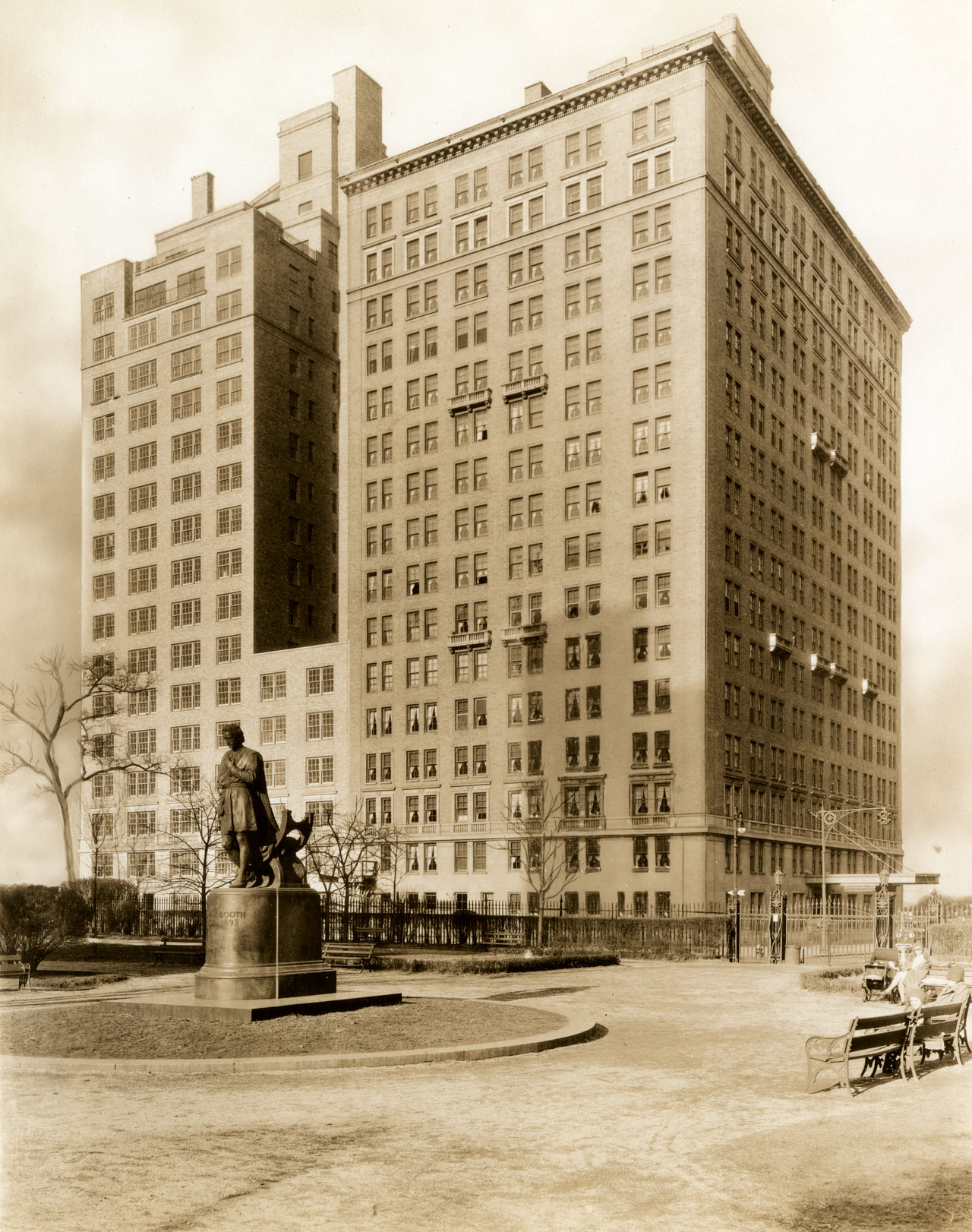
ICON: If you knew the right people, could you really order cocaine via room service?
WEISSBERG: Some of the bellhops got involved in this in the 1970s, but not [the Weissberg family’s favourite] the beloved bellhop Pinky (as far as I know). The High Times editors told me you could order ‘a Telegram at the Gram’, which was a gram of cocaine to your room. Those bellhops were eventually busted, however. There was also the ‘Jewish Cocaine Connection’ led by Howard Z. Fuchs, which operated out of one of the rooms and became a major drug network. He got busted. In truth, the easiest way to find drugs was to hunt down one of my relatives in the bar.
ICON: How did your grandfather get around a police bust?
WEISSBERG: It was ironic. He hired NYPD to moonlight as security. They never bothered guests even when they smelled weed in the hallway or saw other obvious signs. Busts were bad for business and Herbert himself was a target because of his drug-dealing son David. It was always the FBI that did the big busts. Thankfully, they’d tell the hotel to collect the bill first. Once, when the band The Police put up their stickers in the bathroom, everyone freaked out thinking the place had been busted.
ICON: David Bowie would take over the entire third floor of the hotel due to a fear of heights – and then run it like a college dorm. What stories arose from Bowie’s stays at the GPH?
WEISSBERG: David Bowie took over the third floor and put his wife, Angie, on the sixth floor. He had a fear of heights and didn’t like elevators. Meanwhile, tons of women came by his suite for affairs including [singer] Ava Cherry and [model] Bebe Buell. He also wouldn’t let anyone take his photo (an obvious publicity stunt), so a crowd of teenagers formed in the lobby to get his picture. Later a cherry picker parked outside his window to try to snap a photo. Some other bands staying there at the same time hated Bowie and dismissed his teenage girl fans as ‘fag hags’. Bowie famously fainted during his performance at Radio City Music Hall, and it just seemed like another publicity stunt.
ICON: Which celebrity sticks out in your mind as embodying the most “rock and roll” moment?
WEISSBERG: Lou Reed lived in the Gramercy after his unlistenable album Metal Machine Music failed to sell. Visitors to his suite recall him using speed and all types of other drugs, and letting homeless people stay with him. For whatever reason, he hated the Gramercy and refused to talk about it unlike many others who stayed there. He even tried to dissuade others from staying. That was so Lou Reed-like. Other guests were friendlier. Santana used to play with my sister and I as kids and practise on the rooftop for his recording sessions. When he needed a guitar string or an amp, he’d call up room service and they’d deliver it. When U2 arrived, the bellhop Pinky left their guitars outside and they were almost stolen on the pavement – imagine rock history if that had happened! They imitated The Clash by allowing fans to sleep at the foot of their bed. And they drew all sorts of inspiration by seeing other rock legends in the hotel. But, like many, they were surprised at how shabby the hotel was.
ICON: Can you tell me about the time Bob Marley stayed?
WEISSBERG: The maids complained that Bob Marley’s crew were using pages from the Gideon bibles to roll joints. My uncle Steven confronted him about this and they became friends. Steven, who is a musician, also sold him a guitar. There was some issue that members of their group were handing out marijuana legalisation literature outside the hotel and the manager politely asked them to stop.
ICON: Tell me about Bob Dylan and how he spent nights in a suite writing his album Desire post his split from wife Sara.
WEISSBERG: Bob Dylan first came during his legendary Rolling Thunder Revue tour in 1975. During that stay, his crew broke into the bar after hours and also rehearsed in some of the rooms. For subsequent visits, however, he kept to himself and stayed under an assumed name. When singer Joan Baez and Bob Dylan had a falling out, he asked the staff to alert him if she was present in the lobby. (She was also a regular.) Once he had his portrait painted by [famous Welsh illustrator] Ralph Steadman in his room. The painting hung in the offices of Rolling Stone magazine for a while until gonzo journalist Hunter S. Thompson stole it for himself and put it in his Gramercy suite.
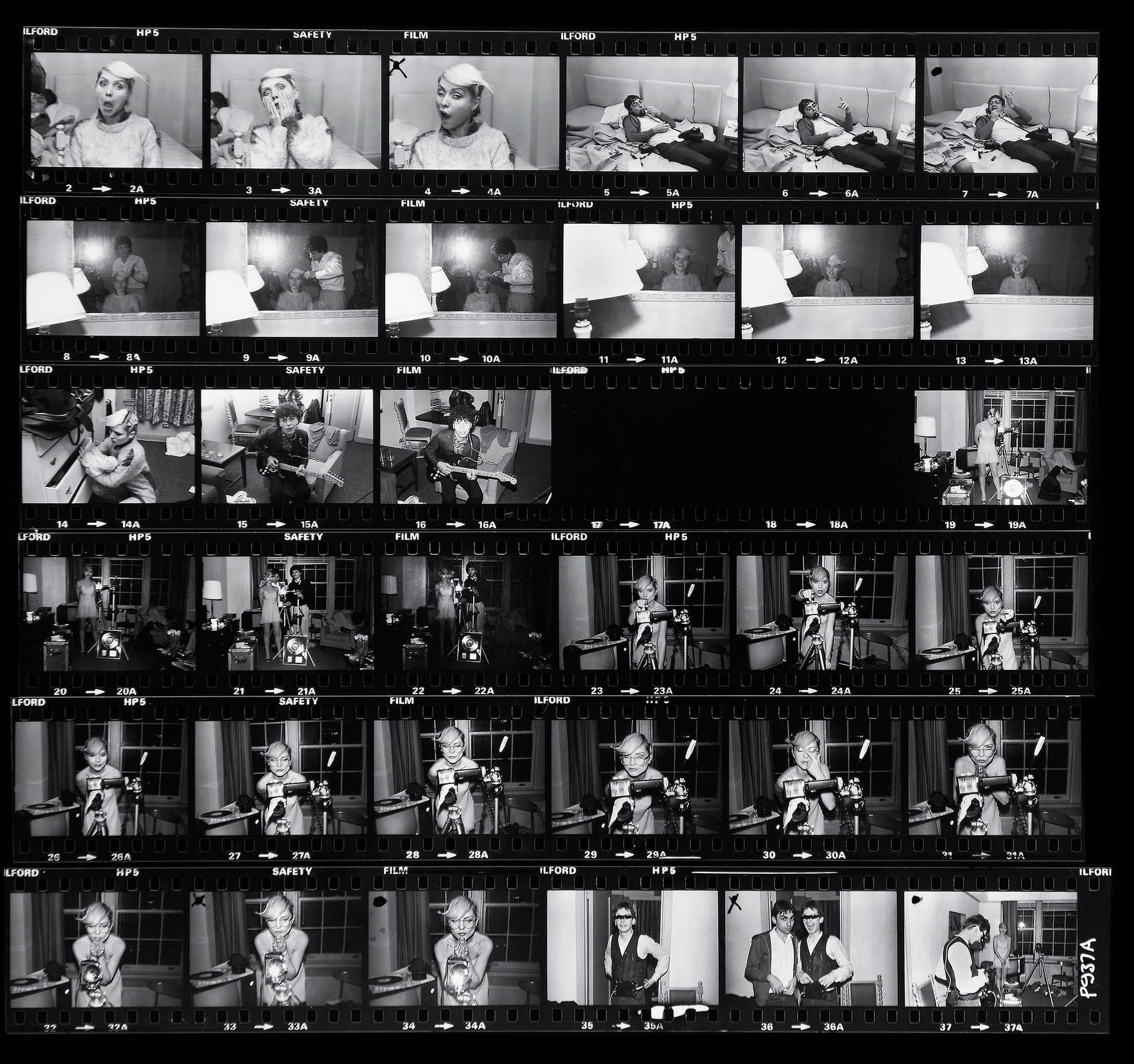
ICON: Your uncle Steven had the most interesting story about Madonna and how she worked as a hat girl at a nearby club before she was famous. What type of guest was she at the Gramercy?
WEISSBERG: Madonna stayed several times in fact, all while trying to climb the greasy pole to stardom. She also went to the hotel for photo shoots on numerous occasions. My uncle Steven knew her through one of her managers, Adam Alter, in 1981. Steven really wanted to play on her upcoming album, but they never asked him. Later they were all hanging out at the Gramercy (doing drugs, I suspect) and Madonna started getting frisky. She rubbed my aunt Madalyn’s back and started talking about a threesome with her and my uncle Steven. My aunt thought she was super pretentious to be calling herself “Madonna”. A year or so later, Madonna became famous and my aunt stopped telling her story because it then seemed like she was the uncool one.
ICON: When The Clash stayed, can you describe the buzz in the hotel? How did your family manage the fans outside?
WEISSBERG: The only time The Clash had an army of fans at the hotel was when they played at the Bonds [International Casino] concerts in 1981. Teenagers hanging out in the lobby was nothing new, but The Clash fans had their clothes held together by safety pins and they sniffed glue. Many dragged their guitars around with them as well. Not great clientele. I asked Mick Jones of The Clash once what it was like and he just said, “Great times, man, yeah.” As his popularity faded, Joe Strummer became just another regular in the bar and he would do all his press interviews there without anyone bothering him.
ICON: Blondie lived in the hotel for three years. Do you know what type of guest she was?
WEISSBERG: One thing Rolling Stone wouldn’t let me report was that the record company gave Blondie a lot of cocaine during her stay, so much that she was handing it out to friends. She had at least two periods at the Gramercy and didn’t have that many nice things to say about it. Everyone seemed to stay there only when they were on the way up or on the way down. The Gramercy never tried to compete with the Plaza and a lot of bands felt they deserved better from their record companies. Many of these people had no sense of what things cost and didn’t care about saving money.
ICON: The Clash’s Joe Strummer once said he liked staying at the hotel because he could get amongst the “vibe of New York and put it on a record”. Can you describe the city’s vibe during that time?
WEISSBERG: Downtown NYC in the ’80s and early ’90s – as I remember it – had a tonne of street performers. Acrobats, breakdancers, comedians even. I remember once I dressed up like Michael Jackson and performed in Washington Square Park. There were so many interesting people on the street back in those days. Once, Joe Strummer and The Clash went into some rough neighborhoods and befriended some gangs. They ended up changing their music style and coming up with “This is Radio Clash”. Unlike now, there were a lot of no-go zones in New York back then, so Joe Strummer was considered brave.
Max Weissberg is an American director and producer and is currently developing a TV series about the Gramercy Park Hotel. He is also raising money for a Russian mafia feature film. Head to startengine.com/karaganda for more details.
THIS ARTICLE WAS ORIGINALLY PUBLISHED IN THE OCTOBER 2019 EDITION OF ICON AUSTRALIA.
RECEIVE YOUR ISSUE HERE.
